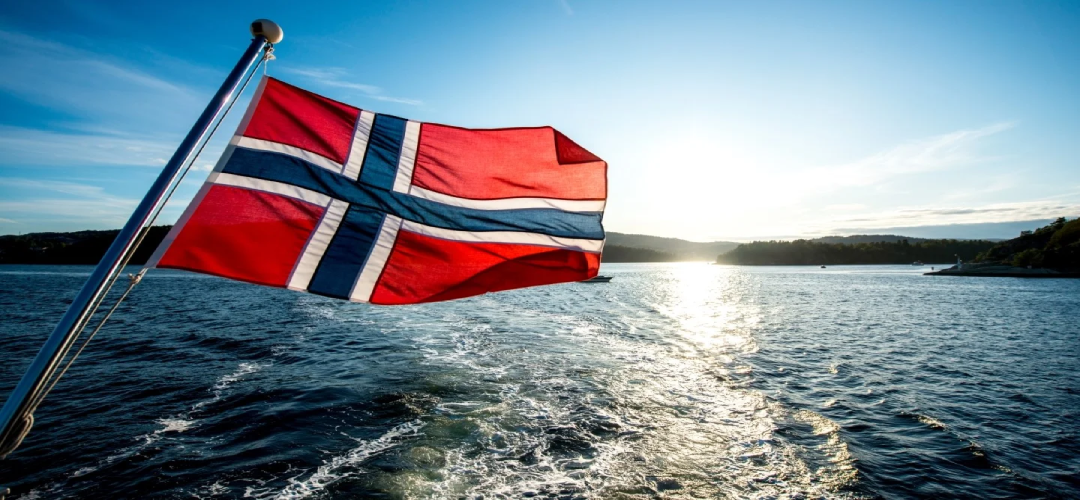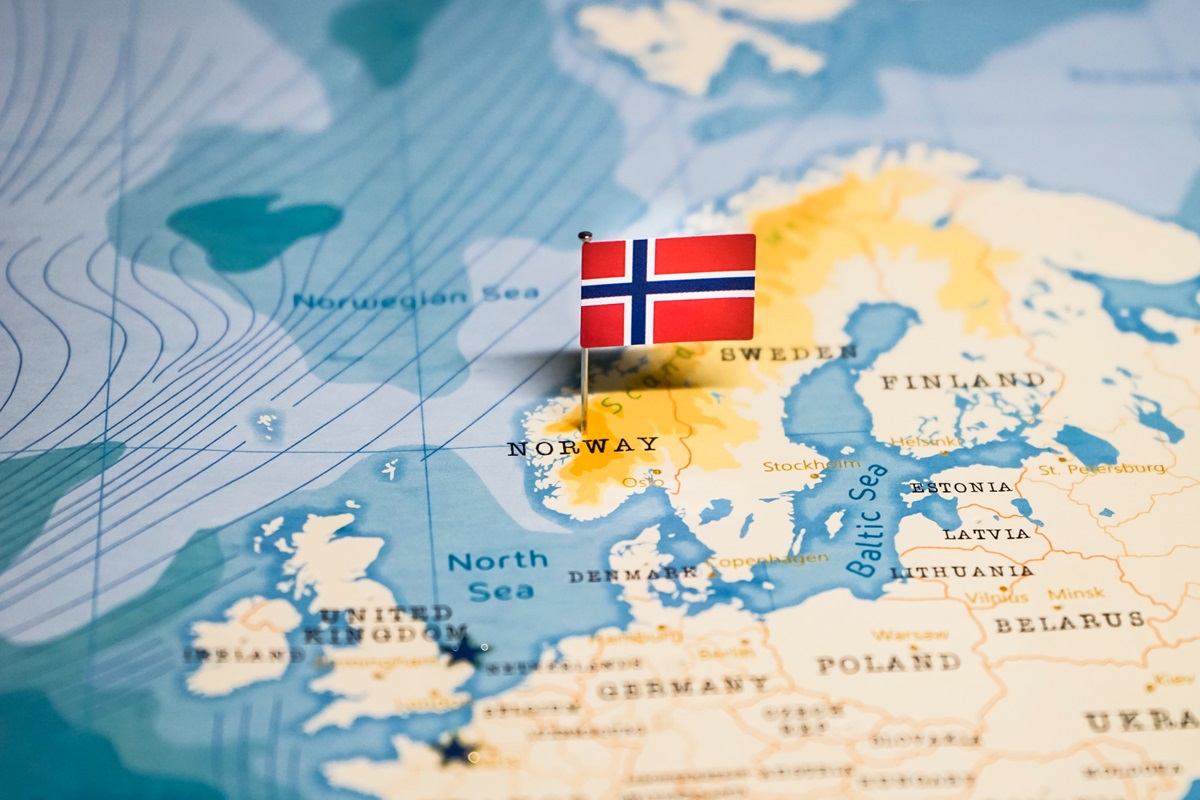Norway: In Deep Waters
January 27, 2024 | Expert Insights

Earlier this month, Norway's parliament came to a controversial 80-20 decision that approves deep-sea mining on national waters, despite 24 countries calling for a ban on commercial deep-sea mining last year. The basis of the argument was to tap into precious metal and mineral resources on the sea floor that help the transition into a greener economy. Scientists have found that the oceanic bed is scattered with nodules of lithium, scandium, cobalt, and other critical elements essential to manufacturing clean technologies.
The proposal has met with international protests from climatologists and environmentalists and internal resistance from research institutes who have contested the decision as one that poses more harm than good in the long run.
Background
Norway’s proposal will open up roughly 280,000 sq km or 108,000 sq miles of its national water for private companies to excavate for resources. The Norwegian government said they do not have the knowledge to perform deep-sea mining, and companies are not allowed to begin drilling yet, as they need to be approved case-by-case.
Green technologies are more material-intensive and demanding than traditional fossil-based machines. The pervasiveness of rare elements, lithium and copper, is demonstrated the most by the automobile industry, which is the biggest consumer of these elements. Companies like BMW and Volvo and car battery maker Samsung pledged not to use deep-sea minerals in vehicles. Rare Earth Elements (REEs) are produced in hundreds and thousands of tonnes rather than millions. With green technologies projected to skyrocket by 2030, the need for these resources has pushed economies like Norway to consider opening ocean areas to mine for them.
Silicon, cobalt, lithium, and manganese are not rare earth elements but are critical minerals essential for the energy transition. Green technologies like electric vehicles, solar panels, and wind turbines use precious metals like lithium, scandium, manganese, copper, nickel, and cobalt to manufacture essential parts. The light, silvery metal lithium is extensively used for lithium-ion batteries. Cobalt, produced mainly as a byproduct of copper and nickel mining, is used as a component in lithium-ion batteries. Nickel and manganese are used as components in batteries. Copper is used as a conductor in wind turbines, and neodymium–iron–boron magnets (containing rare earth elements neodymium and praseodymium) are used to strengthen them. Dysprosium and terbium are used to make them resistant to demagnetisation.
Democratic Republic of Congo (DRC) dominates the current production of cobalt, and Zambia, Australia, Cuba, Canada, Russia and the US hold Cobalt terrestrial reserves. Australia and Chile are the key current suppliers of lithium, while reserves are widespread between Chile, Australia and China. The "lithium triangle" of Chile, Argentina, and Bolivia boast of its 53,000-kilo tonne identified lithium resources, although they have very few reserves. China holds around 44,000kt of rare earth reserves and dominates REEs' processing and supply chains. Mining companies argue that on-land mining for these resources is concentrated in a few countries, and deep-sea mining might open up new avenues to attain these resources.
The Norway Institute of Marine Research (IMR) complains that its government has taken a small area of research and applied it to the entire area proposed for mining. And while outsourcing mining contracts to private companies brings large investments into Norway, opposing campaigners argue that investments must be driven towards reusing and recycling projects.
In the latter half of 2023, The UK and European Commission temporarily banned commercial deep-sea mining until scientific evidence could back its impact on the ecosystem. Climatologists warned the UK that deep-sea mining could impact the ocean's ability to absorb carbon dioxide and tip the scales of marine life ecosystems into further imbalance. According to the International Union for Conservation of Nature, techniques used to harvest the elements from the sea floor can generate significant noise and light pollution. Acquiring these nodules could deprive marine life that depends on it.

Analysis
The key is to consider improving existing systems that can reap the full benefits of underutilised recyclable resources rather than tapping into new ones to avoid taking accountability for the system. The point of conflict is short-term versus long-term industrial implications. Decision-makers are at an impasse, and a complex one at that. Transitioning to a green economy inevitably requires clean technologies to double down on fossil-fuelled industries and meet carbon emission standards. However, deep-sea mining has ecological implications that science cannot afford to assess once the damage has already been done. If conserving the environment comes at its expense, it is not a solution; it's sedation. There is a conflict of ideology, yes. Still, if we look at it the right way, the similarity between present decision-makers and conservationists is that they are looking at their respective long-term goals.
The increased demand for REEs will be met with geopolitical struggles and the formation of new alliances, causing environmentalism to be politicised all over again. As a society, people are limited to the facilities available to them, but as scientists, investors and decision-makers, they do not have to be. Coming to a consensus can be as easy as doing what is best for now or as hard as looking for a viable middle ground, which requires considering climatology and environmentalism's idealistic and academic approach as equally valuable. And if the Environmental Justice Foundation (EJF) reports that there is a way to meet clean transition goals without exploiting the sea bed, then there is a way.
The green economy is linked to a circular economy, which starts with our heavily undernourished recycling systems. The EJF reported that combining circular economy, green technology, and recycling models could cumulatively cut down mineral demand by 58% between 2022 and 2050. They also reported that 16,000 tonnes, or about 10% of annual cobalt production, could be recovered by improving the collection and recycling of mobile phones. It all starts by investing in and updating the technologies used in the recycling system with tools at the most advanced level today, integrating AI and machine learning into sorting and processing units. ASM Robotics is one such company that has taken the reigns to manufacture recycling units aided by AI. On a civilian level, the idea of recycling is an affluent one when it should not be. Increasing awareness and providing facilities like bins and organised drives for collection to middle and low-income communities is a clean lane to go down.
All the above points add up to deep-sea mining being an unusual fix for limited REE resources required for a green economy transition. A great percentage of rare elements and polymetallic elements can be efficiently utilised by upscaling recycling infrastructure with AI and advanced technologies and educating lower-economic populations about a process that does not involve tapping into oceanic resources. Outsourced contracts like this could temporarily be seen as tempting chunk-size investments into the country but could end with Norway needing to deal with legal battles in the long run.
Assessment
- The controversial decision seems counterintuitive to all the parties interested in the environmental aspect of the decision.
- There are concerns that the aim of opening its waters for deep-sea mining has become politicised and lacks adequate research to prove it. Extending Norway’s national waters to private companies with mining expertise will have long-term implications for the country if it carries on this way.
- The ability to adapt the current economy to integrate an essential aspect of a circular economy, that is, recycling and updating the concurrent infrastructure, will prove more sincere to its environmental clause.








Comments